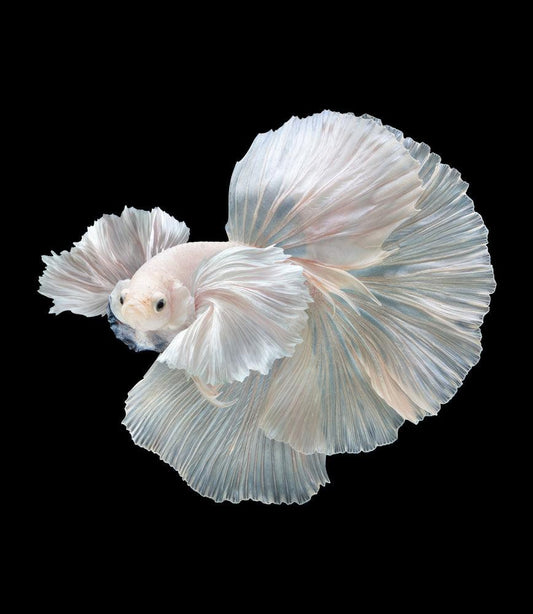All Concerning Betta Fish: Understanding Their Unique Needs, Behavior, and the Ideal Practices for Optimal Care
Comprehending the unique requirements and behaviors of Betta fish is essential for any type of aquarist looking to supply optimum care. betta fish. As we explore these components further, the ramifications for both newbie and seasoned fish keepers become progressively obvious, increasing questions about exactly how best to accommodate these remarkable fish in our homes.
Betta Fish Overview
Although frequently admired for their vivid colors and moving fins, Betta fish, medically called Betta splendens, are intricate creatures that call for certain treatment to grow. Originating from Southeast Asia, these freshwater fish are known for their territorial nature and one-of-a-kind habits. Betta fish display sex-related dimorphism, with males presenting much more vivid shades and longer fins than women.
Their aggressive tendencies, specifically amongst men, demand cautious consideration when real estate them. Bettas are frequently kept in single-specimen containers to protect against territorial conflicts. Nonetheless, they can exist together in harmony with specific suitable species in larger neighborhood storage tanks, provided the setting satisfies their needs.

To make sure optimal treatment, aquarists have to understand their distinct behavior characteristics, dietary needs, and habitat needs. betta fish. With correct attention, Betta fish can display their vibrant individualities and grow in a properly maintained aquarium setting
All-natural Environment and Setting
Betta fish thrive in a diverse range of natural environments, primarily found in the superficial waters of Southeast Asia, consisting of rice paddies, swamps, and slow-moving streams. These settings are identified by cozy temperatures, usually between 75 ° F and 82 ° F(24 ° C and 28 ° C ), and a pH degree varying from 6.5 to 7.5, which is optimal for their wellness and health.
In their natural surroundings, Betta fish are accustomed to dense greenery, supplying both shelter and reproducing premises. The existence of plants such as floating water lilies and thick grasses not only offers security from killers yet also adds to the oxygenation of the water, which is important for their respiratory needs. Additionally, these settings typically have locations of still water, permitting Betta fish to show their natural habits such as bubble nesting.
Understanding the natural habitat of Betta fish is critical for fish tank lovers. Reproducing these conditions-- with water temperature, pH equilibrium, and the incorporation of real-time plants-- can dramatically enhance Click This Link the overall health and durability of these captivating fish, guaranteeing they grow in a home aquarium setup.
Social Behavior and Interactions
Recognizing the social behavior and communications of Betta fish is necessary for effective aquarium monitoring. Betta fish, or Siamese fighting fish, are recognized for their distinct behavior characteristics, identified mainly by territoriality and aggression.
On the other hand, female Bettas exhibit much less hostile actions and can exist together in groups, called sororities, if introduced appropriately. Nevertheless, it is critical to monitor their communications closely, as pecking order and supremacy can cause problems. Recognizing the characteristics within a Betta neighborhood is important; establishing hiding places and making certain adequate area can alleviate aggressiveness.
In addition, Betta fish might also display curiosity and social actions in the direction of various other varieties. While they can coexist with specific non-aggressive storage tank friends, it is necessary to choose compatible types to prevent stress and aggression. On the whole, recognizing these social communications is key to fostering a harmonious aquarium environment for Betta fish.
Necessary Treatment Standards
Supplying appropriate take care of Betta fish is critical to their health and wellness. To ensure a thriving setting, it is important to keep optimal water problems. The water temperature should be kept in between 76 ° F and 82 ° F(24 ° C to 28 ° C), while pH levels ought to vary from 6.5 to 7.5. Normal water changes-- approximately 25% regular-- aid preserve water high quality.
Betta fish call for an ideal container dimension; a minimum of 5 gallons is advised to provide appropriate room for swimming and hiding. Consist of designs and plants browse around this web-site to create a stimulating setting, but stay clear of sharp items that could hurt their delicate fins.

Lastly, make certain the storage tank is equipped with a filter to keep the water tidy, however use a gentle filter to prevent solid currents that can emphasize the fish. By adhering to these essential care guidelines, owners can advertise a healthy and vivid Betta fish.
Common Health Issues and Solutions
In the care of Betta fish, recognition of typical health problems is essential for maintaining their wellness. To deal with fin rot, enhance water problems and take into consideration making use of a broad-spectrum antibiotic.
One more common ailment is ich, a parasitic infection defined by white areas on the fish's body (betta fish). Treatment involves raising water temperature level and adding aquarium salt to the container, as this this website can aid remove the parasite
Swim bladder disorder is additionally regularly observed, causing buoyancy problems. This condition might occur from overfeeding or bowel irregularity. A fasting period of 24-48 hours, followed by a diet regimen of blanched peas, can supply alleviation.
Last but not least, bettas may deal with velvet condition, indicated by a gold dust-like look on their skin. Therapy typically calls for medicine specifically designed for exterior bloodsuckers, together with improved storage tank health.
Routine monitoring of water parameters, keeping a clean setting, and offering a balanced diet are critical precautionary procedures. By resolving these health and wellness issues immediately, Betta fish can lead much healthier, more lively lives.
Final Thought
In recap, effective betta fish care requires an understanding of their unique demands and habits. Regular surveillance of health and water quality, along with a balanced diet, adds to the long life and vibrancy of betta fish.
Comments on “Comprehending Betta Fish Behavior: What Every Proprietor Must Know”